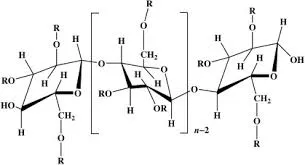
دسامبر . 03, 2024 22:54 Back to list
Applications and Benefits of Hydroxypropyl Methylcellulose in Various Industries
Understanding Hydroxypropyl Methylcellulose (HPMC)
Hydroxypropyl methylcellulose (HPMC) is a versatile, non-ionic cellulose ether that has gained widespread acceptance across various industries due to its unique properties. This compound is derived from natural cellulose, which is sourced from plant cell walls. By chemically modifying cellulose, HPMC obtains its distinct features that make it suitable for a range of applications, from pharmaceuticals to food production.
One of the most significant attributes of HPMC is its exceptional water solubility. It can dissolve in cold water, forming viscous solutions with excellent stability. This property makes it an ideal thickening agent, stabilizer, and emulsifier in various formulations. In the pharmaceutical sector, HPMC is extensively used as a binder in tablet formulations, controlling the release of active ingredients. This controlled-release ability enhances the efficacy of medications and improves patient compliance.
Understanding Hydroxypropyl Methylcellulose (HPMC)
Moreover, HPMC's non-toxic and biodegradable nature adds to its appeal, particularly in the context of increasing environmental consciousness. As consumers demand cleaner labels and sustainable ingredients, HPMC provides a safe alternative to synthetic additives found in many products. Its compatibility with a wide range of substances, including proteins and other polysaccharides, allows it to be seamlessly integrated into various formulations without adverse effects.
hpmc hydroxypropyl methylcellulose

In addition to its beneficial properties in food and pharmaceuticals, HPMC finds applications in the construction industry. It is used as a water-retaining agent in mortars, plasters, and tile adhesives, contributing to improved workability and adhesion. The ability of HPMC to retain water ensures that construction materials remain workable for extended periods, which is essential for achieving optimal results in construction projects.
The cosmetic industry also utilizes HPMC for its thickening and stabilizing properties. It is found in various personal care products, including lotions, creams, and gels, where it helps to achieve the desired consistency. Its gentle and non-irritating nature makes it suitable for sensitive skin formulations, further broadening its applicability.
While HPMC is generally recognized as safe, regulatory agencies continuously assess its safety and effectiveness. The Food and Drug Administration (FDA), for instance, has approved HPMC for use in food and pharmaceutical products, underscoring its regulatory compliance and acceptance in consumer applications.
Research on HPMC is ongoing, focusing on enhancing its properties and expanding its applications. Innovations in processing technologies and formulation science are likely to lead to new uses for HPMC, particularly in emerging fields such as nanotechnology and targeted drug delivery systems. Furthermore, the quest for natural and sustainable ingredients will continue to drive interest in HPMC as manufacturers seek alternatives to synthetic compounds.
In conclusion, hydroxypropyl methylcellulose is a multifunctional carbohydrate polymer that has established itself as an essential ingredient across numerous sectors. Its unique properties—water solubility, non-toxicity, biodegradability, and adaptability—make it a valuable asset in pharmaceuticals, food, construction, and cosmetics. With the growing demand for sustainable and natural ingredients, HPMC is poised to play an even greater role in the future of these industries, reinforcing its status as a remarkable ingredient that bridges the gap between nature and technology. The continued exploration of HPMC's functionalities will undoubtedly contribute to the development of innovative products that meet the evolving needs of consumers globally.
-
Versatile Hpmc Uses in Different Industries
NewsJun.19,2025
-
Redispersible Powder's Role in Enhancing Durability of Construction Products
NewsJun.19,2025
-
Hydroxyethyl Cellulose Applications Driving Green Industrial Processes
NewsJun.19,2025
-
Exploring Different Redispersible Polymer Powder
NewsJun.19,2025
-
Choosing the Right Mortar Bonding Agent
NewsJun.19,2025
-
Applications and Significance of China Hpmc in Modern Industries
NewsJun.19,2025







